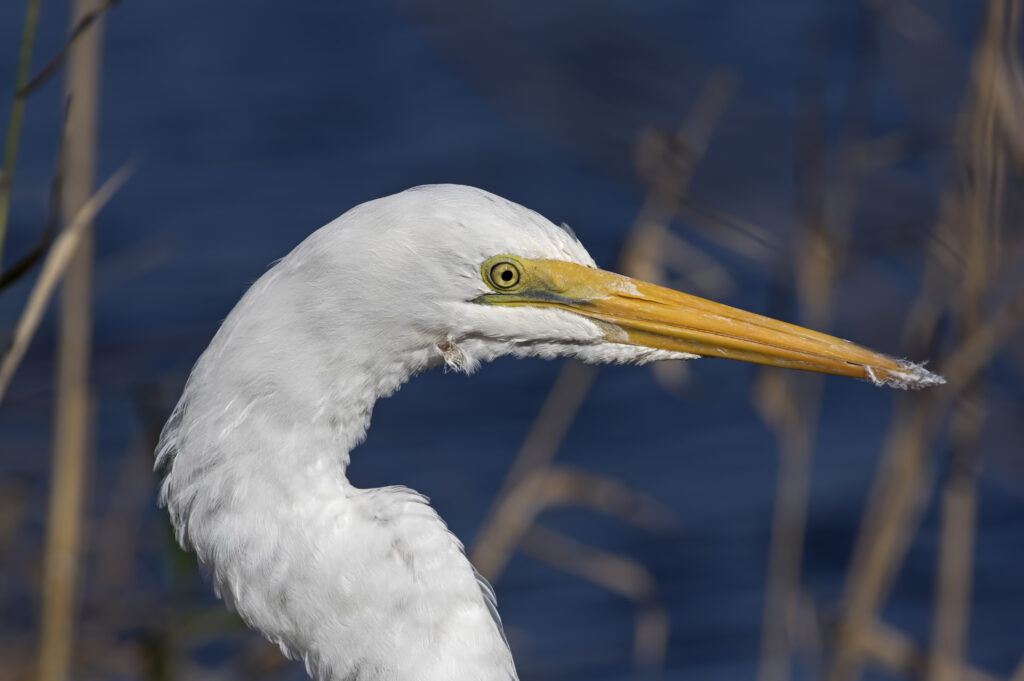By Peggy Eppig, Environmental Educator
Though there are a few bird species still nesting in August, like cardinals and mourning doves, most birds have begun to prepare for the change of seasons. Once brightly colored spring warblers are now all molting into drab browns, grays, and earthy tones which makes it hard to identify one species from another. Roger Tory Peterson, in his Field Guide to Birds of Eastern and Central North America, used the term “confusing fall warblers” for a reason! Even our common and colorful mallard duck males all resemble females now, having lost their brilliant iridescent green heads to dull flecked green streaked with brown.

Great egret (Photo by Mike McKinne)
Besides coloration, bird behaviors change in August as migration time nears. You may notice large circling flocks of swallows out over the river, feeding heavily on flying insects during the day and roosting in large numbers in the afternoons and early evenings along brushy banks or wires, shoulder to shoulder, at rest. Great egrets congregate in numbers along the Susquehanna in late summer and early fall, catching fish and frogs in dispersed groups then gathering together at night in roost trees out on the islands. If you happen to visit the New Jersey, Delaware, and Maryland shores, you will notice that shorebird migration is already underway as large skittering mixed flocks of ruddy turnstones, plovers, sandpipers, and dowitchers are already on the move.
We are at the beginning of one of North America’s most amazing natural phenomena – the fall migration! Birders are themselves beginning to flock to all the best hawk watching spots in Pennsylvania. We have several outstanding overlooks nearby where you can watch the autumn migration of raptors streaming southward along the Appalachian ridgelines to their winter homes in Central and South America. Many of these overlooks, like Hawk Mountain Sanctuary, Waggoner’s Gap, and Bake Oven Knob, are internationally known, drawing thousands of people to our area to witness hawk migrations which will span from late August through early December.
One of my favorite things about fall migration is catching the night movement of birds. Songbirds move at night along with rails, woodcock, and snipe. The evening hours can be magical. Although they can’t be seen, the subtlest of clues let you know they are moving through our woods and over our farms and towns with the patter of wings and faintest of peeps and chatters. Night moving flocks of geese and swans, of course, want everyone to know they are on the move under the light of the moon. My best fall migration memory comes from birding at night as I found myself in the center of a rather noisy songbird migration wave through the woods at Otter Creek Nature Preserve.
You can enjoy fall migration throughout the autumn months at any of our nature preserves, but my favorites are:
- Welsh Mountain Nature Preserve (woods and overlook)
- Hellam Hills Nature Preserve (woods, especially early morning and dusk)
- Wizard Ranch Nature Preserve (meadows, fields, forest, open sky)
- Climbers Run Nature Center (woods, fields, open sky)
Bonus fact: “Roost rings” of birds can sometimes be seen on weather radars! Keep an eye on National Weather Service social media for posts about these interesting patterns created by birds.
